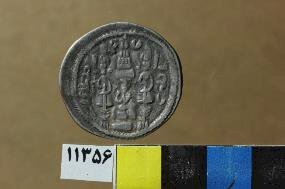A haul of Sassanid coins documented

TEHRAN – The Research Institute for Cultural Heritage and Tourism has recently restored and documented a haul of Sassanid coins previously confiscated by Police forces in Nahavand of Hamedan province.
Sasanian coins are one of the most important sources for understanding the art, politics and economy of the Sasanian period, a cultural heritage expert from the institute said on Saturday.
They reveal valuable information about the script, language, the duration of a king's reign, the economic situation when the coin was minted, as well as the historical events that caused the coin to be minted, Azadeh Heidarpour added.
Pointing out that one of the most important features of Sasanian coins is their minting date, she clarified: During the Sasanian era, when each king assumed the throne, associated coins were minted until the end of his reign.
The recently restored coins were confiscated from smugglers by police forces in 1398 (Iranian calendar year commenced in March 2019), she said.
Noteworthy achievements of Persian civilization were in many ways on display in Iran during the Sassanian era. Experts say that the idea of thin flan coins or coins with relief on both sides, was first introduced by the Sasanian dynasty of Iran around 220 CE.
The Sassanid era saw a general renaissance in the nation's art and architecture. As scholarship was promoted by the government and many works from both the East and the West were translated into Pahlavi, the Sassanian people's official language, crafts like metalwork and gem engraving reached a high level of sophistication during that time.
The Muslim conquest of Persia, also known as the Arab conquest of Iran, led to the fall of the Sasanian Empire of Iran (Persia) in ca. 651 and the eventual decline of the Zoroastrian religion. The rise of Muslims coincided with an unprecedented political, social, economic, and military weakness in Persia.
AFM
